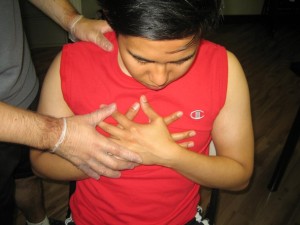Bronchiectasis is defined by irregular stretching and enlargement of the bronchi and bronchioles. It is a part of a group of lung ailments categorized as chronic obstructive pulmonary disease (COPD).
The condition is often brought about by repeated swelling and infection of the airways. In some cases, it might be existing at birth or the individual is predisposed to it due to early childhood ailments such as measles, pneumonia, tuberculosis or influenza.
Other influencing factors include irregular lung defenses and blockage of the airway by a tumor or foreign object.
What are the signs?
Bronchiectasis causes an unusual widening of the airways due to continuous infection and inflammation.
Once the airways are dilated, the excess mucus starts to buildup in the enlarged spaces. The accumulation of mucus serves as a breeding ground for bacteria which increases the risk for lung infections.

The symptoms of bronchiectasis develop in a gradual manner and might not arise for months or even years.
The usual signs include the following:
- Chronic coughing that worsens when lying down
- Hemoptysis
- Dense, foul-smelling mucus
- Weakness
- Fatigue
- Weight loss
- Shortness of breath that is aggravated by physical activity
- Wheezing
- Clubbing of the fingers
- Chest pain
- Recurrent lung infections
Management of bronchiectasis
The objective of treatment for bronchiectasis is to control the infection, allow drainage of excess lung secretions and prevention of further complications. Even though the disease could not be cured, treatment can help an individual lead a normal life.
The treatment options might include any of these:
- Bronchodilators
- Antibiotics
- Yearly flu shot
- Decongestants, expectorants and mucus-thinning medications
- Avoidance of irritants such as smoking
- Postural drainage
- Hydration
- Chest physiotherapy
- Oxygen therapy
- Surgical lung resection
In case the condition does not seem to respond to treatment, bronchoscopy might be suggested by the doctor to check if there is blockage in the airways.
